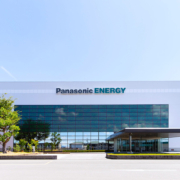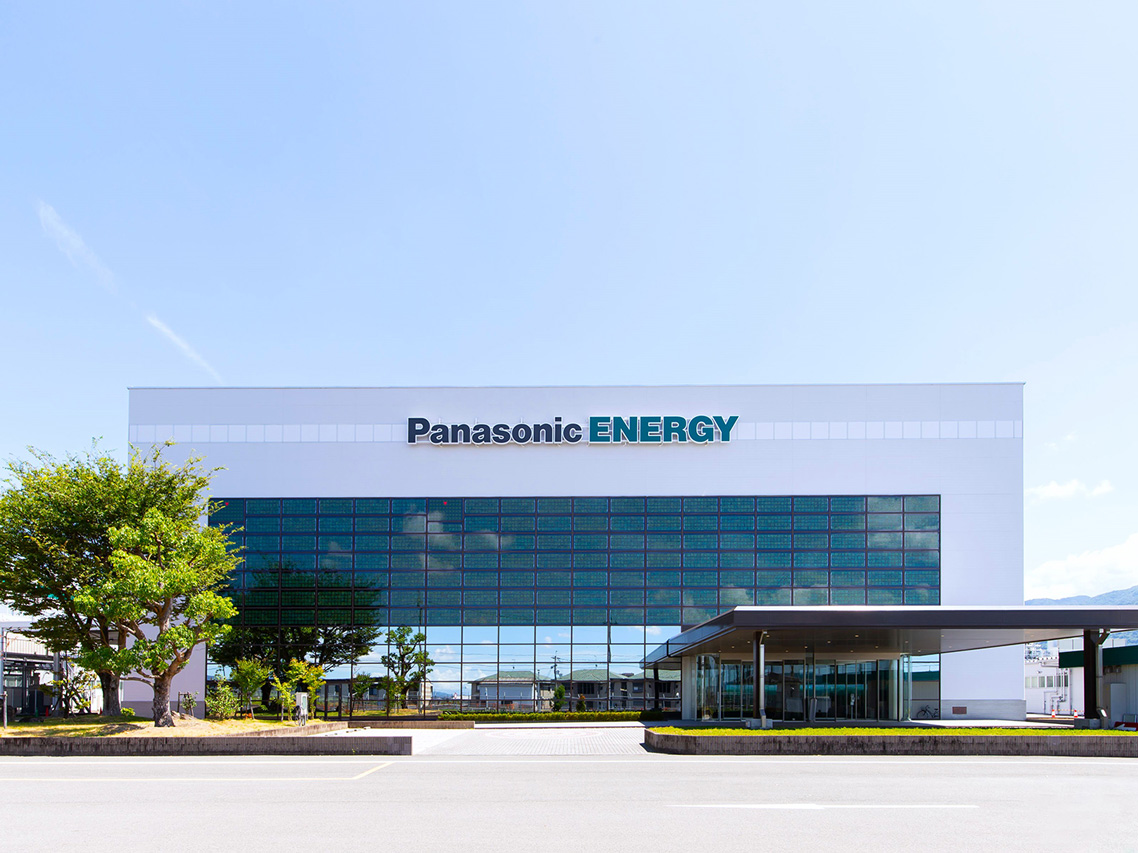Regionalising the EV-Battery Supply Chain: Trends and Geopolitical Risks
Picture: Copyright © Panasonic Holdings Corporation
In recent years, the global electric vehicle battery industry has been strategically realigning regionally as major economies elevate supply-chain security to the level of national strategy. The United States and Europe are pushing for local production and erecting new trade barriers, while China is carefully weighing the gains of overseas expansion against the need to keep next-generation technology at home.
- Regional security: localization and geopolitical jockeying
Supply-chain security now means reducing reliance on foreign links in critical manufacturing. Guided by the Inflation Reduction Act (IRA), Washington is building a domestic battery chain with lavish subsidies and steep tariffs to cut dependence on Asian cells. From April 2025, the U.S. imposed a 25 percent tariff on imported vehicles and parts, including batteries. It invoked Section 232 of the Trade Expansion Act to brand foreign cars as a security threat. Cumulative levies on Chinese battery products can exceed 100 percent, virtually shutting them out of the American market.
South Korean and Japanese firms, some already producing in the U.S. and classed as allies, face an effective tariff of about 24–25 percent, which would encourage Korean makers to accelerate U.S. plant construction.
In Europe, supply-chain safety is equally urgent. The EU, worried about its growing dependence on Chinese batteries and EVs, stresses de-risking rather than outright decoupling. Brussels is weighing anti-subsidy duties on Chinese EVs, partly to force Chinese manufacturers to build plants in Europe, create local jobs, and gain less dependence on foreign producers. CATL and BYD have announced large battery and vehicle projects on the continent. Yet such ventures face scrutiny: CATL’s Thuringia plant in Germany has been raided by regulators and challenged by residents over energy use, underlining the need for social license. European governments try to balance investment appeals against fears of surrendering industrial control, so the regional tug-of-war continues.
For its part, China commands a fully integrated chain—from lithium mining and materials refining to cell-making equipment—giving it resilience against external pressure. Even if Korean and Japanese firms replace Chinese suppliers in America, they still depend heavily on Chinese raw materials and machines. Beijing is tightening control over critical know-how: exports of cathode-material technology, for example, now require Commerce-Ministry licenses to prevent leakage. The quest for security is shifting the battery chain from global cross-border layouts toward three hubs—Americas, Europe, and East Asia—each seeking to deepen local supply and cut strategic dependence on the others.
- Cost control: localization versus tariffs
Cost management is the other obstacle. Re-shoring battery production to the U.S. or Europe means higher labor and energy bills, eroding price competitiveness, and forcing governments to subsidize. LG Energy Solution (LGES) posted a 138 percent jump in first-quarter operating profit this year. Still, it would have sunk into the red without IRA tax credits, showing how tightly earnings hinge on policy. The advantage lasts only as long as subsidies do; Congress is already debating subsidy cuts, which would immediately squeeze margins.
Tariffs directly tilt cost structures. Punitive U.S. duties of 10–100 percent on Chinese batteries have driven up prices: Chinese LFP storage batteries now pay 155.9 percent, rising to 173.4 percent in 2026, wiping out their price edge. Korean suppliers have seized the gap, winning U.S. storage-battery orders. Yet Korean and Japanese cells exported from home still pay a 25 percent tariff, so companies are hunting the sweet spot between production costs and tariff burdens—building plants on the U.S.–Mexico border or in eastern Europe to combine lower costs with preferential market access.
Upstream, battery makers are securing raw materials. Washington and Brussels seek friend-shoring deals with Australia and African states to curb reliance on Chinese lithium and nickel. Friend-shoring refers to forming strategic alliances with other countries to secure raw materials, thereby reducing dependence on a single supplier. Chinese firms, meanwhile, sign long-term contracts and nurture domestic material providers to smooth price swings. The cost contest has become a multilayered game: governments juggle subsidies and tariffs, while companies scour the globe for low-cost niches to offset localisation expense.
- Policy dependence: a double-edged sword
The policy now shapes the market. IRA subsidies can flip a project from loss-making to profitable, so Korean firms fight hard for eligibility. But political winds change. Talk in Congress of trimming clean-energy credits has already rattled LGES and prompted General Motors to pull its earnings guidance and postpone an investor day.
Korean battery makers hedge by spreading investment. LGES is expanding in the U.S., Poland, and Indonesia to dilute single-market risk. When U.S. rules tighten, they pour money into American lines; when subsidies fade or demand slows, they divert capacity elsewhere—LGES has paused its new Arizona factory and is favoring existing plants.
Europe’s policy sway is just as strong. The EU funds start-ups like Northvolt and promotes a battery alliance, yet it still struggles against Chinese competition. Its anti-subsidy probe could lead to duties or quotas on Chinese EVs, adding risk for Chinese car-and-battery exporters. However, European automakers need Chinese battery know-how to meet emission targets, forcing governments into a careful dance: welcoming Asian investment but policing environmental and labor rules and writing local service obligations into law. Companies that can lobby and adapt stand to gain; those that cannot may stumble.
- Capacity adjustment: flexibility amid slowing demand
With EV growth cyclically uneven, battery makers are demonstrating resilience by reassessing their expansion plans. After a significant investment boom in 2022-23, signs of softer demand have emerged, with Europe’s EV sales slowing and some North American carmakers cutting output. However, the industry is taking proactive steps to address potential overcapacity.
Delays or freezes: LGES has slowed its new Arizona plant; China’s SVolt has halted a German Gigafactory after customers canceled orders; Northvolt has reduced headcount and paused expansion to conserve cash.
Line conversions: Firms are shifting to underused
EV lines to energy-storage systems (ESS). LGES has retooled some facilities and launched U.S. LFP ESS output a year ahead of schedule. Samsung SDI and SK On plan similar moves.
Market diversification: Korean suppliers squeezed out of China’s booming EV segment, chasing non-automotive and regional orders, winning big U.S. grid-storage deals with firms like NextEra. Chinese giants barred from America redirect surplus cells to Europe and emerging Asian markets.
These tactics demonstrate the industry’s resilience: trimming in lean times and pivoting to rising niches. However, foresight is crucial. SNE Research predicts another EV surge in North America and Europe after 2029. This underscores the importance of a nimble capacity strategy, cutting back in winter and blooming in spring to separate winners from laggards.
- Technology spillage: control versus localization
Technology spillover looms large. Having climbed from licensee to innovator, China worries about losing its edge. Officials urge firms to keep core production at home and export only knock-down kits; in 2024, ministries privately told carmakers not to build complete EV factories in India. Beijing has also restricted exports of high-performance battery technologies and tightened scrutiny of engineers traveling overseas.
Europe, though, wants incoming plants to bring R&D and skills transfer. Analysts at Rhodium Group say future EU policy may link investment approval to local knowledge sharing. CATL is localizing rapidly: hiring European staff, staging cross-cultural programs, and even serving German food in plant canteens to look “home-grown” and ease worries about data or tech outflows.
A practical compromise is emerging: keep bleeding-edge formulas at home and ship a slightly older generation abroad. Robust patent portfolios and legal enforcement remain essential.
Battery regionalization is now irreversible. Nations build walls, yet supply chains stay interlinked, forcing businesses to balance protection with cooperation. Cost gaps shuffle as subsidies rise and fall. Policy dictates winners, yet they can flip overnight. Capacity plans must flex with demand. Technology must be guarded without choking overseas growth.
Executives should realize that regionalization is not isolation. The strongest players will be those deeply rooted locally and connected globally, able to navigate shifting policies and fragmented markets to seize the next wave of growth.





